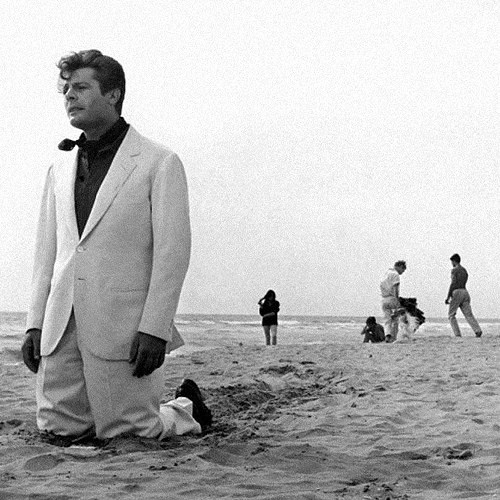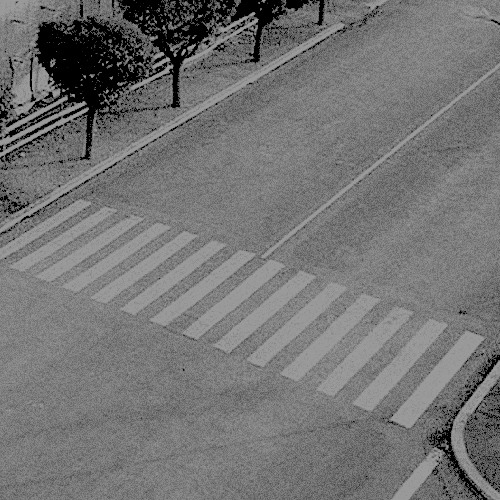2013: The year in retrospective. Part IV –CAITY KERR–
Article by Caity Kerr
Writing about sonic art practice is problematic. It’s too easy for the whole project to collapse into discussions about individual tastes or become a treatise on technology. Occasionally a clever academic surfaces on the lookout for an easy target or perhaps even a gap in the knowledge market. Recently there has been an steep rise in the rate of textual output, mainly in the form of academic papers from the knowledge industry, which treats us to extreme abstractions and fashionable koan-like puzzles such as ‘non-cochlear sound’, the likes of which still have me confused and amused in equal measure.
So without dumbing down too much I’d like to look at some of the things which have inspired me over the year, at why the material practice of field recording still inspires and excites me and countless others. Field recording – that secret pleasure enjoyed by so many, which gets us out of the house, which still gets a regular and partly-deserved mauling from self-styled critics and experts on new music, and yet….. which always manages to offer enough intrigue, sensuality, imaginative and creative potential, even magic, to make the practice worthy of serious attention. One day it might even become a substitute for sex – indeed from the amount of images of rugged males posturing manfully with furry microphones it may have already done so.
I know that there are lots of different kinds of field recording, territories carved out and even fiercely protected, and I also know that there have emerged from the masses many experts, gurus and masters. These people will willingly tell you their separate and various versions of the truth about field recording, but what I find interesting and what I’d like to share with you are just a few simple observations about the whole business which might have been overlooked by the experts or those whose eyes are fixed obsessively on the path to renown and canonic finality.
To begin with, very little gets said about the reception side of the business. There are hundreds of cds and online releases of field recordings but I’d like to know more about who listens to them, why, where, under what conditions and so on? In the context of photographic discourse, John Tagg has written very incisively about these issues of material conditions and I’d recommend in particular his book Burden of Representation: Essays on Photographies and Histories for an insight into some fresh ways of considering field recordings.
Secondly, following the line of social reception, many of us know where we’re going with our field recording practice, or we think we do in principle, but do we know enough about where it all came from? Obviously not, it would seem from what I read week in and out, to avoid the unfortunate business of constantly re-writing its history, a re-writing which arises partly from ignorance, partly from misplaced enthusiasm and an overestimation of one’s skills (or of the skills of others close to your own interest), and partly from a desire to write oneself into the history books when nobody’s looking. So if we take a critical look at Fellini’s La Dolce Vita, ignoring if we can the impossibly pneumatic Anita Ekberg and the very handsome Marcello Mastroianni, we’ll be aware of the scene in Steiner’s house where the jaded bourgeois guests make a show of enjoying various hobbyist activities, including listening to and commenting upon nature sounds on a tape recorder. This in itself is edifying but what I find remarkable is the complete absence of surprise on the part of the gathering. They are completely underwhelmed. From their casual and familiar reaction we can only conclude that this kind of social listening to field recordings has been going on for some time. The film was made in 1960 and the action will, I assume, be taking place sometime in the ‘50s. I reckon that field recording as a recreational activity, along with sophisticated forms of social listening, have been around for a long time, probably since affluent people were able to afford portable recorders, and that this practice is simply an extension, using different media, of the salon recital or, lower down the social scale, the ceilidh where everyone does their bit. Apart from giving the lie to the regular round of practitioners who believe they’ve invented the practice, this historical perspective, fortunately in my view, takes us away from the production end to the reception of recorded sound in social contexts.
[Photo still: Federico Fellini’s ‘La Dolce Vita’]
Developing this investigation further then, it strikes me that the practice of gathering together to listen appreciatively, to share work, impressions and ideas, is an eminently human activity, an ancient habitus and one worthy of our attention. Young teenagers still (I hope) gather in grubby bedrooms to bang heads against walls in appreciation of black metal, a fine tradition if ever there was. Unfortunately, unlike black metal, outside of some effort at social engagement, field recordings suffer badly at the reception end of the deal. In my little world they don’t come over very well on cds, unless the cd is used socially. They come over less well on the web. They can be used very effectively in site-specific installation and in extended performances but we can’t all get along to those. It’s as if we’re all trying too hard to make big art with something that doesn’t want to fit. As for listening on mobile media devices – there’s something rather sad about bolting yourself to a tiny device, isolating yourself and listening half attentively at the back of the bus or walking through city streets as a remote environment unfolds in your head. This leaves the door open for modest social listening projects and so I find myself warming more and more towards those splendid but unfashionable initiatives put in place by selfless artists to encourage social listening. I would also respectfully acknowledge those projects of greater vintage which have encouraged people to get together and listen critically without making a song and dance about it. A central European composer, a specialist in radio art, recently pointed out to me the obvious – that the kind of social listening that I’m talking about, and indeed advocating, is in fact radiophonic practice par excellence and of course he’s absolutely right. Somehow, if you wanted it to, this contextualisation could lend cultural gravitas to a very ordinary human need, albeit mediated by some measure of technology – a couple of speakers and a playback system. In the end, to repeat myself with further analogies, it’s an extension of the gathering-together to look through the family album or the (now historical) slide show amongst friends, and before that all manner of small quasi-domestic social gatherings. I should say also that these listening events needn’t be only about field recording with microphones – some people prefer to record fields in moving image, drawing, spoken word and performative acts. Though on the face of it a lot of this might be considered unfashionable because it doesn’t’ come over well on Facebook, we can talk up the idea by considering for a moment the delicious tension between an expanded definition of ‘field’ and ‘radiophonic’ and a reduction of the radiophonic reach, narrowcasting as parochially as possible.
Moving in now to an aspect of production and hovering over the complex relationships between the three fundamental listening environments that we normally encounter in creating works with recorded sound: life/field, studio, and reception of the presentational form, the other thing that strikes me as significant and which determines my reaction to a given work or works, is that field recordings needn’t just be about the material, or how the sounds feel on the ears – some of the finest works, of great depth and conceptual rigour, also show remarkable awareness of the semiotic content. So recordings of human social ritual for example will have narrative built into the framed outcomes as well as affording purely sonic interest or the fun of appreciating the materiality of sound for its own sake. Because we are human and social creatures (in theory!) field recordings arising out of socially engaged projects can also provide us with recognisable drama and with diegetic commentary to which we respond spontaneously – I regularly notice opportunities for recording such dramatic events in everyday life, though rarely with recorder to hand. So much can be done within the practice of everyday life.
Staying with production and returning to film, this time for an inspiring example of simple but brilliant sound design, I can’t help mentioning a scene from Antonioni’s L’Eclisse (1962) with the impossibly beautiful Monica Vitti and Alain Delon, in which a superb example of the power of sound, or rather its absence, is capitalised upon to great effect. In one scene at the Rome Stock Exchange all activity comes to a halt as an announcement is made asking for a moment of silence for a colleague who has just passed away. Phones continue during the silence. As we watch and listen the penny drops – having been made aware of the unholy racket of trading activity prior to the silence, we now know what’s coming, a realisation which heightens our appreciation of the tension, of incidental sounds, phones ignored. Following the silence, the room erupts once again as the traders begin their noisy work. Some of the best field recordings I’ve ever heard, often very short pieces yet notable for their framing, manage to capture events or processes where drama and tension created by the absence of sound as significant content manage to guide the work to a successful conclusion. If we spent some time analysing such examples of good film sound practice and added in a reading of the techniques of Walter Murch, best known for the sound design of Apocalypse Now, then took a browse through Michel Chion’s Audio-Vision : Sound on Screen, we would have enough to keep us going for a lifetime of creative parochial listening and of everyday sound plundering.
[Photo still: Michelangelo Antonioni’s ‘L’Eclisse’]
In my experience (I can’t prove this empirically, it’s something I’ve observed and felt) there are fundamental differences between individual listening and social listening, between field recording and moving image (apart from the obvious) and between listening to recorded sound in a domestic setting and in a gallery. The social/individual distinction has to be investigated for oneself. With sound alone I find it more challenging but more rewarding to ’listen through’ (by analogy with the ‘looking through’ of photographic discourse) to a range of real-world themes and topics that the artist has found to be of interest and that (s)he wishes to explore with the listener. In a gallery setting there are weighty conventional implications around everything you place in the space, from loudspeakers to text or other supporting objects and media. What I’m trying to say is that in a domestic or quasi-domestic social setting we have a better chance, or a different chance, to realise a more profound and rewarding listening experience.
Some of the finest work in field recording facilitates this aforementioned ‘listening through’ very well and the line between successful and less successful works, though often very fine, can be very important. On the ‘other side’ of an effective and often simple framing of a field recording we can relish the impact or the strength of a solid conceptual foundation, usually the result of good research and investigation. The field recording is often no more than the tip of the iceberg. And what of musical value? Why not – some of the finest live music on offer uses to great effect the abstractions of field recordings, in tandem with instrumental and electronic sources, though I’ll leave that for another discussion because it’s about ‘music’ and because abstraction and representation are complex territories – the spectrum is unstable and highly subjective.
Finally, rewinding to the late ‘90s and the turn of the present century, very recently if you take a wide view, there was I believe a ‘moment’ when field recording along with other sonic art practices showed the potential to really become part of a meaningful avant-garde, to show the conceptual edge, discrimination and originality that we find in the previous fin-de-siècle spikes of creativity, and to lay out new ways of communicating, distributing and sharing work. This in my view was down to the fact that a few artists were working away quietly and modestly (where did that go?) with a somewhat distressed and perished aesthetic, eschewing hyper-realistic perfection or random borrowings from minimalist discourse (or from anywhere else that gave added value by virtue of being fashionable), celebrating the materiality of sound, the imperfect, the small, unimportant and relatively ignored, laying bare the device. It’s as if people weren’t trying too hard to become something, they were simply making good work with recorded sound and sharing it. This aesthetic comes very close to that of wabi-sabi and it was one of the very few chances I’ve encountered where it became possible to generate a cultural habitus in which elitism and the conventions of Western art and music orthodoxy would be kept at bay. Then various agents began to operate and it all turned to mush with social media, the ubiquity of individual exposure and the desire for renown. But think 50 or 100 years ahead and to what people will make of this torrent of new output. As it happens I insist obtusely in asking myself old-fashioned questions about the importance of depth or at least some kind of added value in new work, about the relationships between complexity and simplicity which, by the way, is not as obvious as it would seem if we look at the etymology of the words. I also enjoy being obtuse in refusing to accept media-driven reductions of certain creative practices, in refusing to follow trends or to write false mission and artistic statements. All of which I hope helps me to keep a clear head and to continue to enjoy field recording as a material practice, to permit myself to be critical of everything in and around the practice – to carry out as our old friend Karl Marx would have it ‘A Ruthless Criticism of Everything Existing’.
[Caity Kerr]
*Upper photo courtesy of DPA





